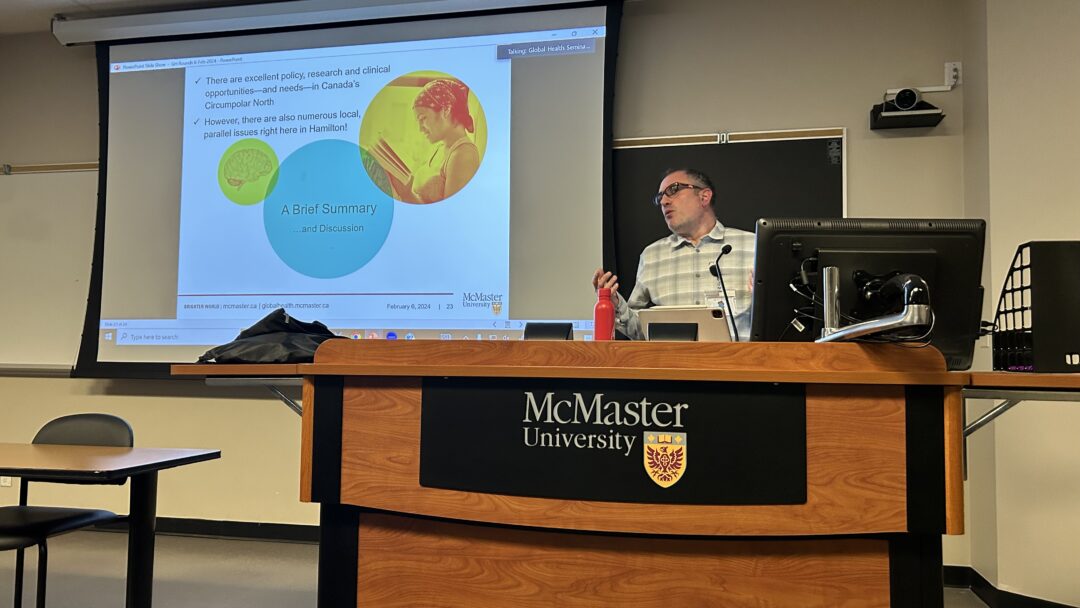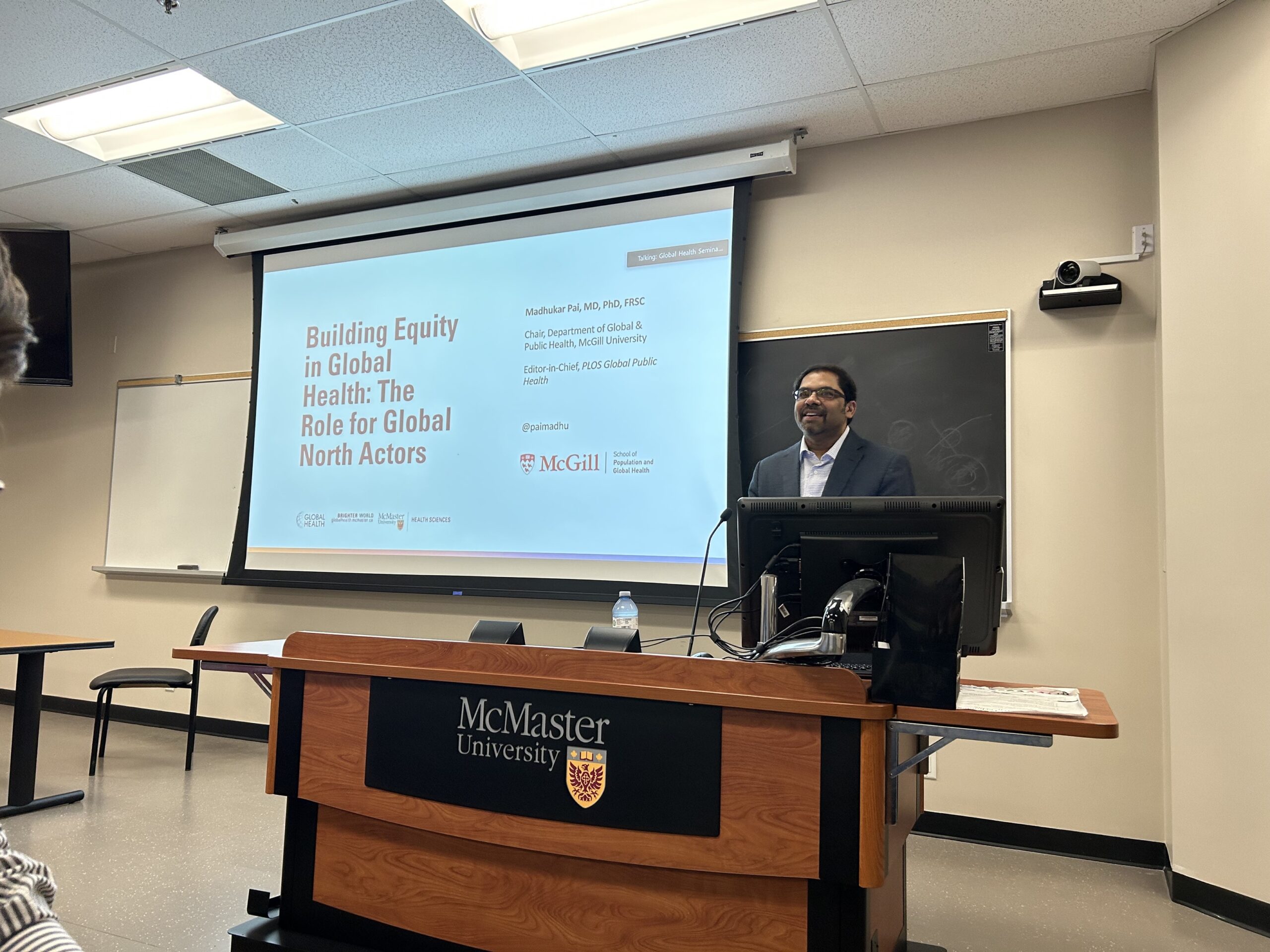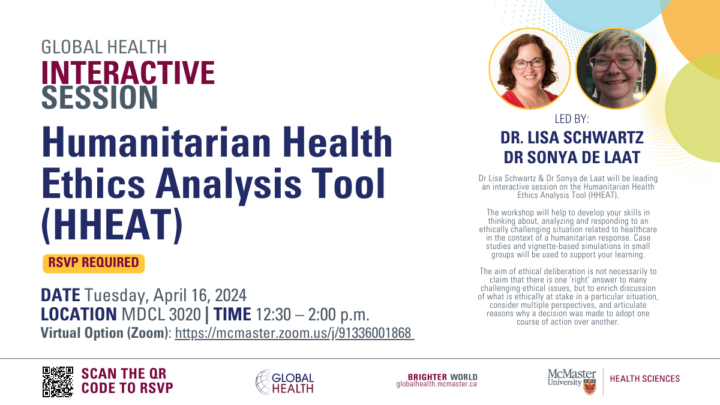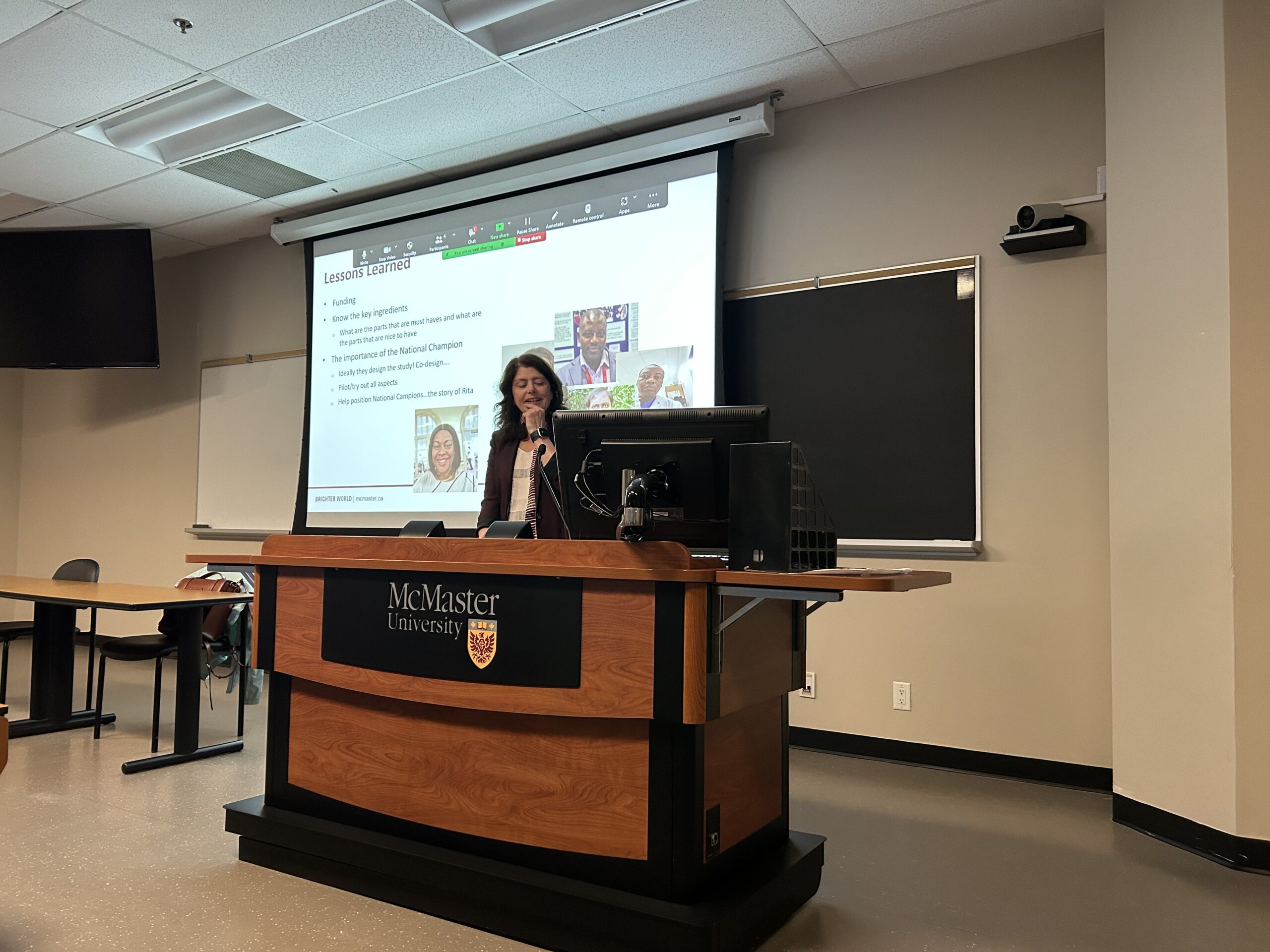What do Hamilton, Tuberculosis and Inuit have in common? A Historical Perspective to Current Circumpolar Health Challenges

Dr. Alex Drossos (pictured above) presenting at the Global Health Seminar Series on Tuesday February 6, 2024. Blog post written by Global Health MSc student, Dr. Saneea Abboud, MD, CCFP (PC)
Those who attended Alex Drossos’ seminar on February 6th caught a glimpse into the lives of Northern Canada’s Inuit during the peak of the tuberculosis (TB) epidemic in the 1950s and 60s. This communicable disease, introduced to Canada’s North by European settlers, led to staggering Inuit death and illness at a time when medical treatment was limited. Many attendees were shocked to learn that between 1958 and 1962, Hamilton was home to the largest Inuit population outside of Inuit Nunangat as over 1200 Inuit patients were shipped to the Hamilton TB sanitorium. The stories of family separation and tragedy shared by Drossos served as poignant reminders of enduring trauma and the lasting impacts of colonial legacies on the health and well-being of many Inuit today.
Drossos began by contextualizing TB within the contemporary circumpolar landscape, noting the disproportionately high rates of TB among Canada’s Northern Inuit communities compared to the rest of Canada and other high-income countries. He recognized the high rates of TB among Inuit as but one of many health disparities resulting from social justice inequities. These include poverty, food insecurity, crowded housing conditions and poor healthcare access and infrastructure. Many of these socioeconomic disparities are persistent manifestations of colonisation including racialized policies and legislations geared at the assimilation and control of Inuit and their land.
One of these colonial policies included the immediate seizure of TB-infected Inuit adults and children onto the government’s C.D. Howe ship. This ship would take Inuit from ports in the North to sanitoriums in the South, including to Hamilton’s ‘Mountain Sanitorium’. This practice tore Inuit families apart, often indefinitely, as patients either succumbed to the disease or never returned home. For many, it resulted in the loss of language and culture and psychological and physical abuse and trauma. Children, separated from their families, often had no means of communication, leaving loved ones back home uncertain of their well-being or whereabouts.
As a child and adolescent psychiatrist serving youth in Iqaluit and the Qikiqtaaluk region of Nunavut, Drossos is familiar with the profound impact of intergenerational trauma on the mental wellbeing of his patients. His relationship with Inuit communities in Nunavut extends to McMaster University’s Children’s Hospital where Inuit patients are commonly admitted due to the lack of an inpatient psychiatry unit in the territory. He highlighted a clinical case of a local adolescent patient of mixed Indigenous ancestry who lived with the impact of childhood trauma, a term he prefers to call developmental and intergenerational trauma. Drossos emphasized the importance of always acknowledging this condition when treating Indigenous patients, ensuring trauma-informed care.
Drossos also told attendees about Naudla, a survivor from Kinngait, Nunavut who was only 10 years old when sent to the sanatorium in Hamilton. This past summer, Naudla presented at a public reception held as a part of a week-long event during which survivors of the sanitorium and their loved ones returned to Hamilton to grieve and heal. He shared stories from his childhood marked by separation, trauma, and resilience, and remarked on his feelings of release and closure upon returning to Hamilton. Part of the survivors’ stay included a visit to the Art Gallery of Hamilton, where a collection of 100 pieces of soapstone sculptures and textile pieces made by Inuit patients of the sanitorium have been researched, refurbished, and showcased. They also had a private viewing of photos of patients taken at the Hamilton sanitorium, part of McMaster University’s Library archive. Efforts are being made to repatriate the art and materials back to their respective communities.
In conclusion, Drossos’ seminar illuminated a lesser-known aspect of Canada’s colonial past. Hamilton’s historical connection underscores the responsibility of residents to confront this shared history and recognize the enduring impact of colonialism on the health and well-being of Inuit. As Canada endeavours to rectify past and present injustices, we, as budding Global Health leaders, must recognise the intergenerational trauma and ongoing socioeconomic disparities that continue to stand against Inuit and other Indigenous peoples. Thus, it is our duty to know this history and approach Indigenous health issues with cultural humility and a trauma-informed lens.
Student Blog



